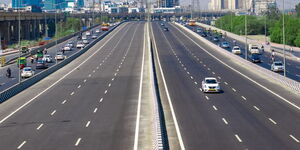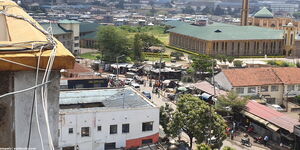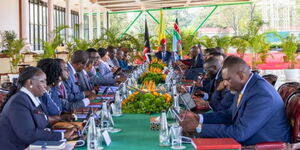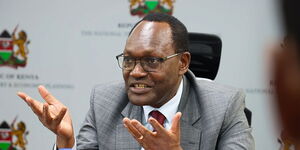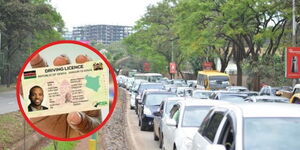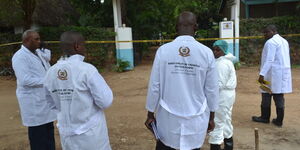Most political analysts opine that a leader is best when people barely know he exists but his work speaks for him. This reflects the late President Mwai Emilio Kibaki's 10-year tenure as the Head of State.
After handing over the leadership mantle to his successor, President Uhuru Kenyatta, Kibaki left behind a rich development legacy that will forever be remembered by the people of Kenya.
Kibaki was a powerful public figure and his legend was etched in stone in 1974 when Time, the most decorated American publication, named him among 100 people in the world likely to become Heads of States.
38 years later, in 2002, what Time predicted came to pass. He was elected the Third President of the Republic of Kenya. This was after unsuccessfully contesting for the country's top job in 1992 and 1997 on a Democratic Party (DP) ticket.
On December 29, 2002, at Uhuru Park, Kibaki made his inaugural speech promising democracy and prosperity. 20 years down the line, Kenyans hail him as one of the greatest Presidents ever.
He brought back the dwindling fortunes of the Kenyan economy, built infrastructure, collected revenue, and rehabilitated schools. It was during his tenure that Kenyan tourism sprouted back to life and businesses flourished.
Kenyans.co.ke takes a look at five major projects that Kibaki will be forever remembered for.
The Constitution of Kenya 2010
Kibaki's delivery of a new Constitution in 2010 remains to be one of his most significant contributions to the country. Under his presidential dispensation, Kenya promulgated a new constitution which has been described by scholars as one of the most progressive constitutions in the world.
The Constitution of Kenya 2010 brought about changes that Kenyans were yearning for, restoring hope and promoting democracy. It marked the beginning of a new era in Kenyan politics.
The Constitution saw the introduction of devolved units of government which saw more resources allocated to the people at the grassroots.
Free Primary Education
It is during Kibaki's era that Free Primary Education (FPE) became a reality in Kenya. Kibaki - a Makerere University and London School of Economics graduate - had a special place for education in his heart.
He described education as an equalizer between the rich and the poor.
His Education agenda was aligned to his economic recovery plan that saw multinationals establish offices and plants in Kenya, ultimately spurring growth and development.
Kibaki’s re-introduction of Free Primary Education won him global accolades and saw the number of pupils enrolling in schools jump to a record high.
Primary school education was free in the 60s and 70s but was phased out after the country's economy became overwhelmed during the late Daniel Arap Moi's tenure.
Constituency Development Fund (CDF)
Kibaki was the brains behind the introduction of the Constituency Development Fund (CDF) in 2003. He designed the fund to support constituency-level grass-root development projects.
The then Head of State introduced the fund with the aim of achieving equitable distribution of development resources across regions and controlling imbalances in regional development brought about by partisan politics.
{"preview_thumbnail":"/files/styles/video_embed_wysiwyg_preview/public/video_thumbnails/tEwg2NBvTY4.jpg?itok=ub55MsH7","video_url":"","settings":{"responsive":1,"width":"854","height":"480","autoplay":0},"settings_summary":["Embedded Video (Responsive)."]}
The fund targeted development projects aimed at combating poverty. The significant achievements of the fund include putting up new water, health, and education facilities in all parts of the country, including remote areas that were usually overlooked during funds allocation in national budgets.
To date, most Kenyans are still reaping fruits from CDF funds, now National Government Constituency Development Fund (NG-CDF).
Thika Superhighway
The former university lecturer is also credited for building the Thika Superhighway. The mega-project in East and Central Africa started in 2009 and was completed in 2012.
He envisioned the project with the aim of expanding the four-lane carriageway to eight lanes, building underpasses, providing interchanges at roundabouts, and erecting flyovers to ease congestion.
Kibaki oversaw the building of the 50.4kms road, in three phases: Uhuru Highway to Muthaiga Roundabout; Muthaiga Roundabout to Kenyatta University, and; Kenyatta University to Thika Town.
The project was undertaken by China Wu Yi, Sinohydro, and Sheng Li companies and cost Ksh31 billion.
Economy
Present-day Kenya's economy cannot be discussed without the name Kibaki. His contribution was immense. He oversaw the creation of Kenya's Vision 2030, a long-term development plan aimed at raising GDP growth to 10 per cent annually and transforming Kenya into a middle-income country by 2030. He unveiled it on October 30, 2006.
The Kibaki regime also saw a reduction in Kenya's dependence on donor aid, with the country being increasingly funded by internally generated resources such as increased tax revenue collection.
Relations with China, Japan, and other non-western powers improved and expanded remarkably in the Kibaki years. China and Japan especially, the Asian Tigers such as Malaysia and Singapore, Brazil, the Middle East, and to a lesser extent, South Africa, Libya, other African countries, and even Iran, became increasingly important economic partners




